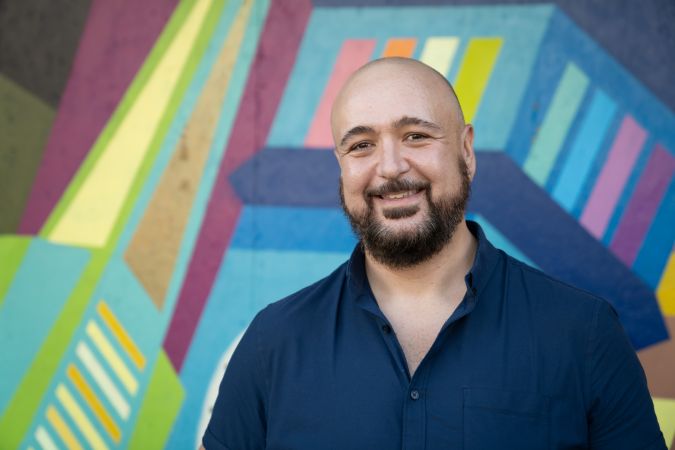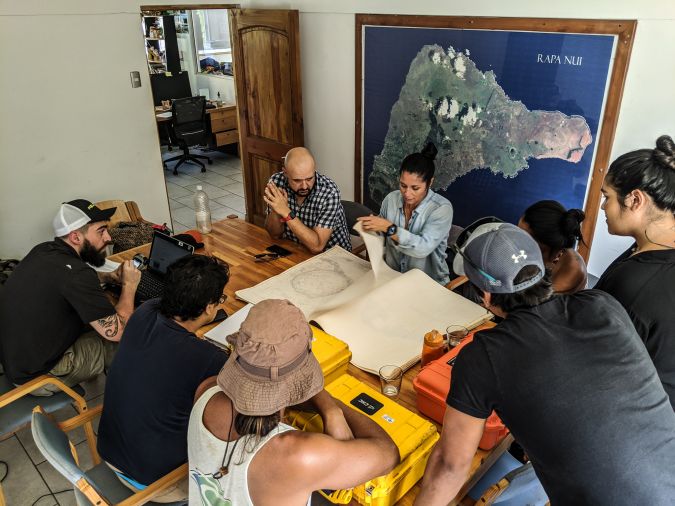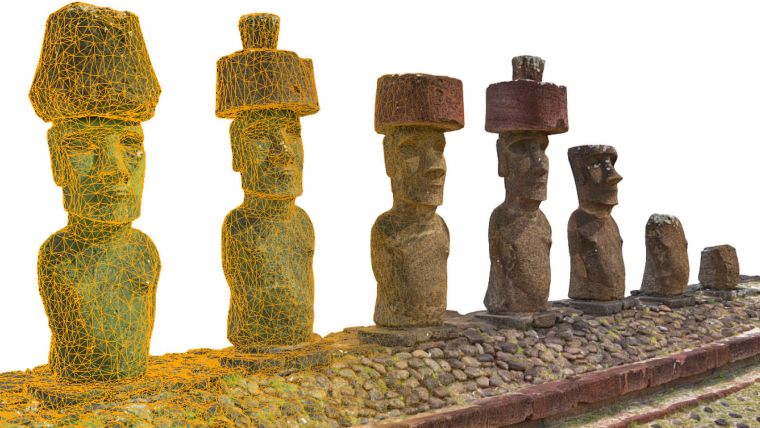The power of 3D: CyArk's journey in preserving cultural heritage
Interview with John Ristevski, CEO and chairman
In this interview, John Ristevski, chairman and CEO of CyArk, takes us on the organization’s 20-year journey of digitally preserving cultural heritage sites. Today, the company uses advanced technologies such as Lidar scanning and photogrammetry to create accurate and immersive 3D models that don’t just capture the physical aspects, but also document the stories and historical context. Collaborating with governments and local communities, sharing knowledge, and addressing ethical considerations are all key factors in this. CyArk’s dedication to inclusive access and preservation underscores the importance of engaging with cultural heritage.
How has CyArk’s mission changed over time?
CyArk embarked on its journey 20 years ago when Lidar technology was nascent. Initially, we focused on creating an archive for posterity, but as the underlying technology has advanced, so too has our mission. We’ve moved beyond scanning structures, to integrating data from a variety of sensors to produce accurate and photorealistic 3D models. Additionally, we’ve taken a more holistic approach to documentation to facilitate storytelling, focusing on not just the physical aspects but also documenting the stories, historical context and lived experiences of the sites. One of the other critical aspects that drive us today is sharing our knowledge, methodology and data with researchers, academics and the heritage community.
As a nonprofit organization, how does CyArk secure the necessary funding to sustain its impressive endeavours?
Our work is supported by a diversified funding strategy. We rely on grants from various sources, including government entities and foundations that share our commitment to the documentation and celebration of cultural heritage – some recent examples include the Aliph Foundation, Ambassadors Fund for Cultural Preservation, and the National Endowment for the Humanities. Additionally, we garner support from corporate sponsors whose missions resonate with our own and who value the impact that our work has on the world. Furthermore, we engage in service work, leveraging our deep expertise to offer mission-aligned services to those working in the cultural heritage sector. This multi-faceted approach enables us to sustain and grow our mission over the long term.

Why is it so important to provide opportunities for people to engage and connect with cultural heritage virtually, and how does CyArk contribute to this?
It is often a privilege to have the resources, time and/or ability to visit heritage sites in person. Digital access opens doors for anyone with internet access, regardless of their geographical location or personal circumstances, so that they can learn from and appreciate these cultural treasures. The virtual medium also provides an opportunity to highlight lesser-known or underrepresented narratives. This plays a vital role in promoting a more inclusive understanding of our global history and diversity. To support further research, we have made a significant effort under our Open Heritage initiative to make many of the datasets we and our partners have collected available for download and secondary use under creative commons licences.
How do you collaborate with governments, local communities and other stakeholders when working on preservation projects?
Collaboration is at the heart of our work at CyArk. We start every project with a lot of listening, and strive for active collaboration to ensure our projects are truly beneficial to the communities we work with. We endeavour to involve local partners in every step, from planning to execution, which helps to foster ownership and ensures the outputs are relevant. Beyond the immediate project, we invest in capacity building, imparting skills in digital documentation techniques to enhance self-sufficiency and foster a culture of knowledge sharing. For example, we recently completed the Rapid Emergency Documentation programme in Bangladesh, in which we trained a cohort of students from two universities in a specially customized methodology designed for rapid capture, processing and data publication in less than 48 hours. It is very inspiring that the university students really took to these techniques and have since documented a number of historic resources throughout Bangladesh.

How do you address the potential ethical considerations and challenges related to the digital preservation of cultural heritage, such as permissions, data ownership and cultural sensitivity?
In order to avoid any confusion or miscommunication, it is important to establish clear agreements with site managers and local partners regarding permissions as well as ownership, management and distribution of digital data generated during the project. We prioritize transparency and upfront communication in addressing these matters early in the project development process. Being mindful of cultural sensitivities requires active listening and asking questions whenever necessary. Our experience has taught us the importance of seeking clarification before taking action.
What are the key methodologies and geospatial technologies used by CyArk when documenting and digitally conserving cultural heritage sites?
Lidar scanning and photogrammetry are our two pillars for every digital documentation project. Lidar scanning is invaluable for capturing a highly accurate 3D representation of complex structures, while photogrammetry enables us to record detailed textures and colours. By fusing the data from these two methodologies, we can create comprehensive models that exhibit high spatial precision and possess photorealistic qualities. This fusion of methods enables us to maintain the integrity of both tiny details and larger spatial contexts, ultimately producing high-fidelity and immersive datasets that we can use in a variety of applications.
Which technological developments in geospatial data capture are you monitoring with the most interest, and why?
Recently, I have been particularly fascinated by the rapid evolution and potential of neural radiance fields, or NeRFs. These are a recent development in machine learning that create a fully connected 3D scene from a set of 2D images. This deep learning approach could potentially allow us to capture sites in a three-dimensional manner that was previously impossible, offering improvements in speed and quality for some applications. The richness of detail and the depth of information possible with NeRFs could revolutionize how we digitally document and visualize these datasets. This could provide us with ways to capture minute details, textures and lighting conditions that can significantly enhance the realism of a 3D model.

How do you envision the future of digital preservation and access to cultural heritage sites, especially against the backdrop of the talent shortage?
As the technologies continue to evolve, capturing 3D data will become even more effortless and efficient, which will create a strong need for robust methodologies and know-how to ensure the accuracy and utility of data for a given purpose. This is something we can continue to support as part of our mission going forward. The way audiences interact with data will also continue to evolve. With the advent of even more sophisticated virtual and augmented reality technologies, there will be a shift from passive consumption to immersive storytelling. Audiences will no longer just see, but also experience these sites and engage actively with the stories they hold.
How can the geospatial industry further contribute to the field of cultural heritage mapping and preservation?
I’d really like to see greater sharing of geospatial data and contributions to open-access platforms so that a wider range of people, including academics, researchers, conservators and enthusiasts, can repurpose data collected from heritage sites. Although not a customary practice in commercial endeavours, the value of such data can extend far beyond its immediate application, provided that the site and community are agreeable and open to a broader sharing scheme. In addition, increased transparency in methods and workflows would be of great benefit, particularly for those new to the field aiming for superior results in their documentation projects. Given that the hardware costs are relatively minimal, there is a significant need for this approach, especially since techniques for achieving robust results are often kept proprietary.
Which of the world’s heritage sites holds a special place in your heart?
The unique cultural heritage – including the renowned monumental stone statues called moai – of Rapa Nui or ‘Easter Island’ and its very remote location in the South Pacific make it a very special place. CyArk has worked there over many years and many expeditions, and I personally have been lucky enough to have travelled there as part of two of them. We have worked with local communities on the island to build local capacity in 3D documentation, and those groups are now utilizing the technologies and data to assist in site management activities.
How does CyArk see itself within the broader geospatial industry?
For us at CyArk, partnerships with geospatial industry leaders such as Topcon and Faro are pivotal as they bring cutting-edge technology that we can apply to our projects. We also learn from the industry in general; it is a goldmine of knowledge and expertise that we leverage to enhance the fidelity and accuracy of our digital documentation. Furthermore, the unsung heroes – the service providers in the geospatial industry – deserve recognition. They are often on the front lines, applying their skills and knowledge to projects and problems at heritage sites around the world. I hope we can be a source of knowledge for them as well.

About John Ristevski
John Ristevski is CEO and chairman of the board at CyArk. Prior to that, he was the vice president of reality capture and processing at Nokia’s mapping company, HERE, where he led the company’s initiative to index reality. John joined HERE in 2012 through the acquisition of his own company, Earthmine, which developed systems to capture and deliver highly accurate street-level imagery and 3D data of cities. Ristevski holds an MSc in Architecture from the University of California at Berkeley and degrees from the University of Melbourne in both Geomatic Engineering and Law. He is a Fellow of the Royal Institute of Chartered Surveyors and has lectured at Stanford’s Civil and Environmental Engineering Department.
About CyArk
Since its inception in 2003, CyArk has been utilizing laser-scanning technology pioneered by Ben Kacyra, its founding director, to meticulously document the world’s cultural and historic heritage sites in three dimensions. Collaborating with local partners at over 200 sites in more than 40 countries, CyArk has been able to create an extensive collection of models, which are housed in a freely accessible online library. The applications of these models are diverse, encompassing educational initiatives and aiding the reconstruction of heritage sites damaged by conflicts, natural calamities or simply the passage of time. Just some examples of the cultural-heritage mapping projects completed by CyArk include the ancient Silk Road city of Samarkand in Uzbekistan, the ancient Mayan archaeological site of Tikal, the historic districts of New Orleans, various military cemetery sites such as the Normandy American Cemetery and Memorial in France, and the iconic Sydney Opera House.

Value staying current with geomatics?
Stay on the map with our expertly curated newsletters.
We provide educational insights, industry updates, and inspiring stories to help you learn, grow, and reach your full potential in your field. Don't miss out - subscribe today and ensure you're always informed, educated, and inspired.
Choose your newsletter(s)
























